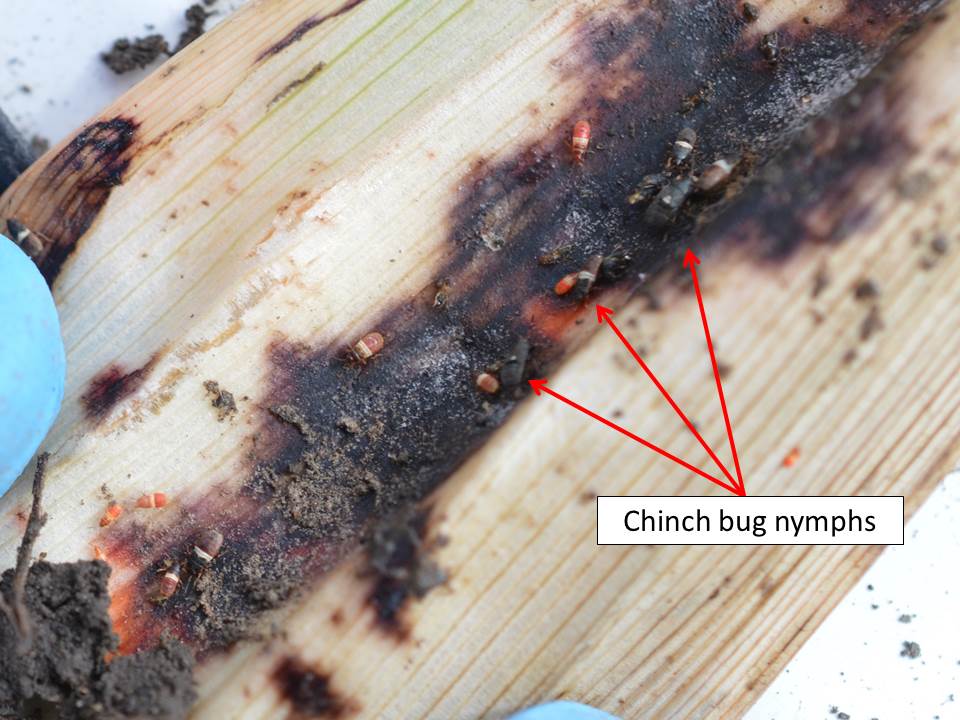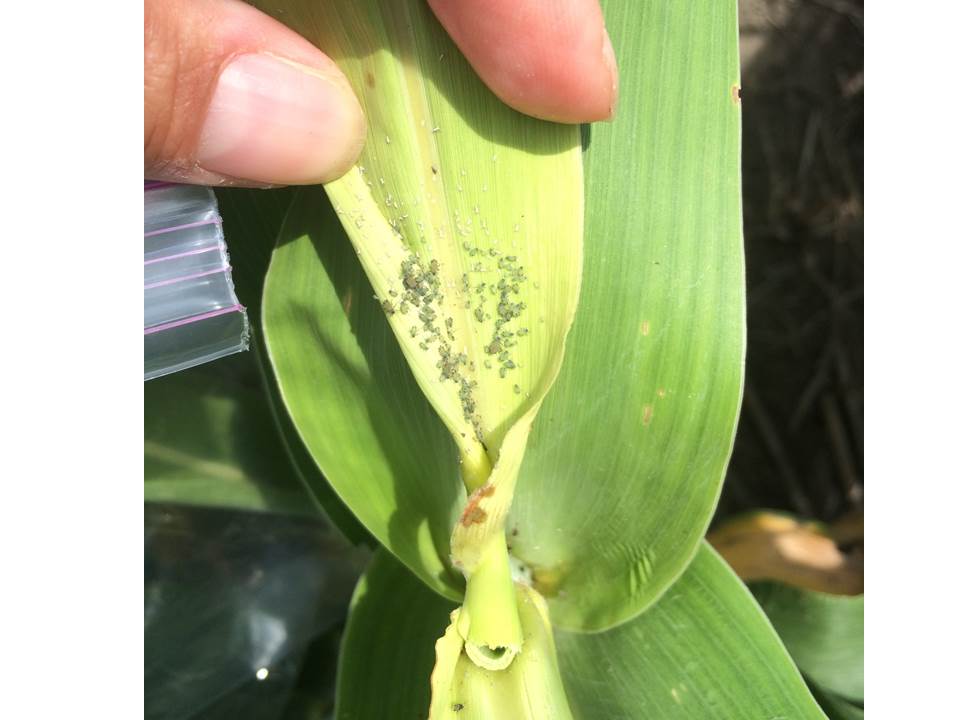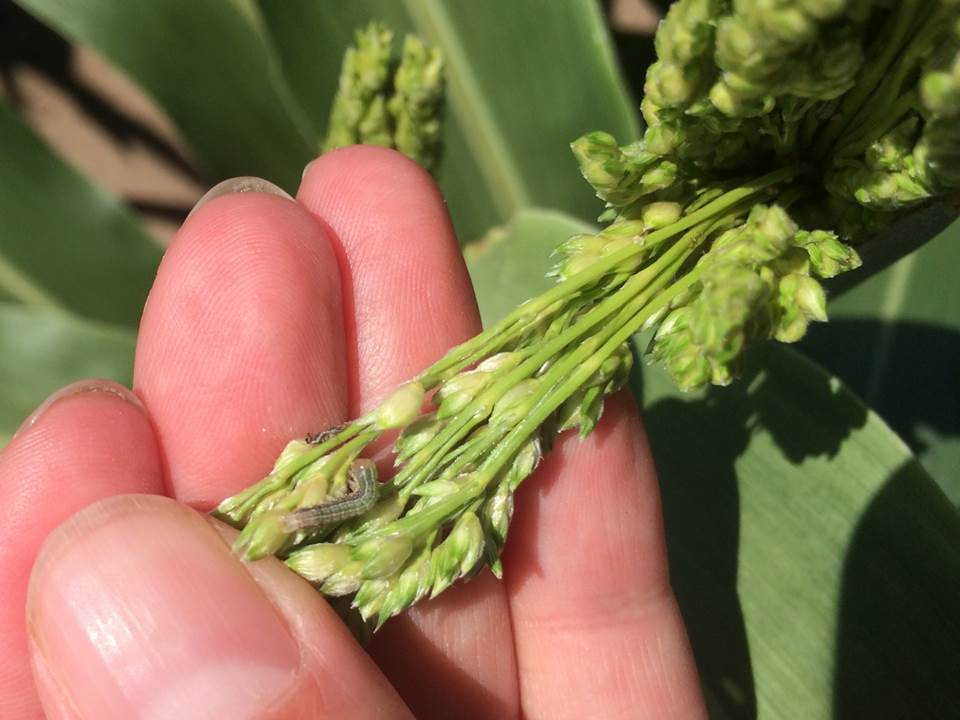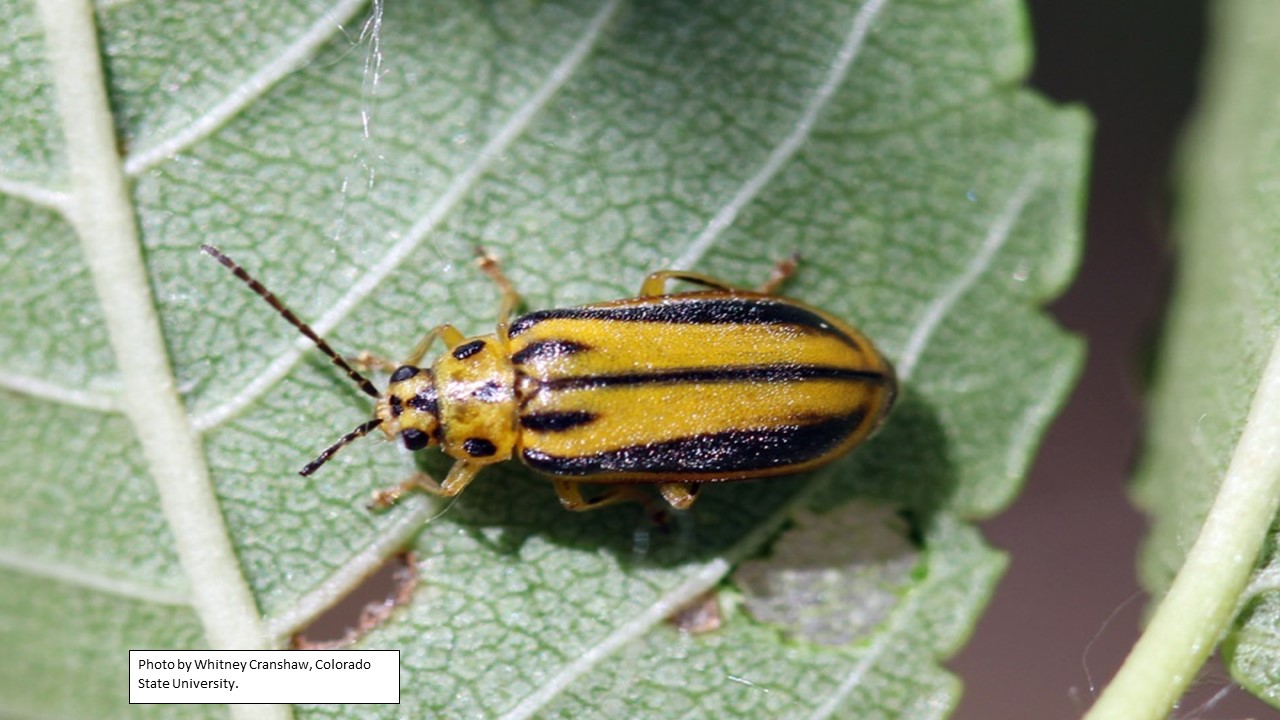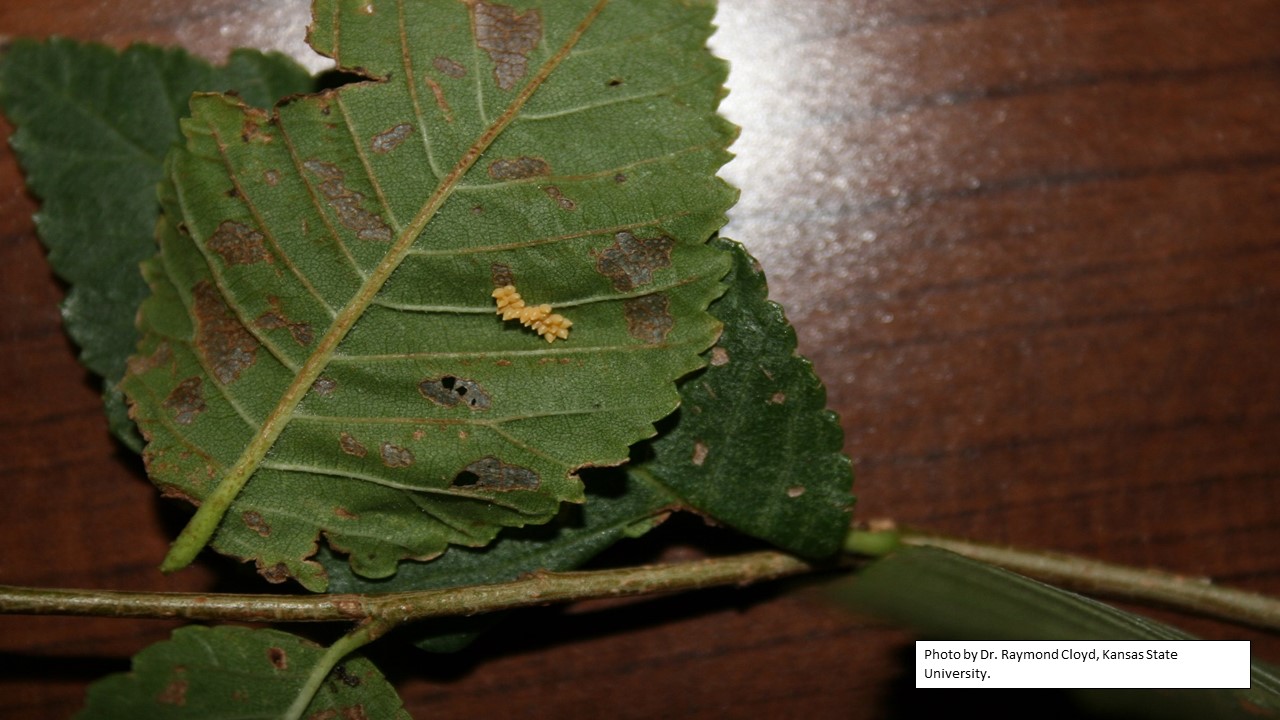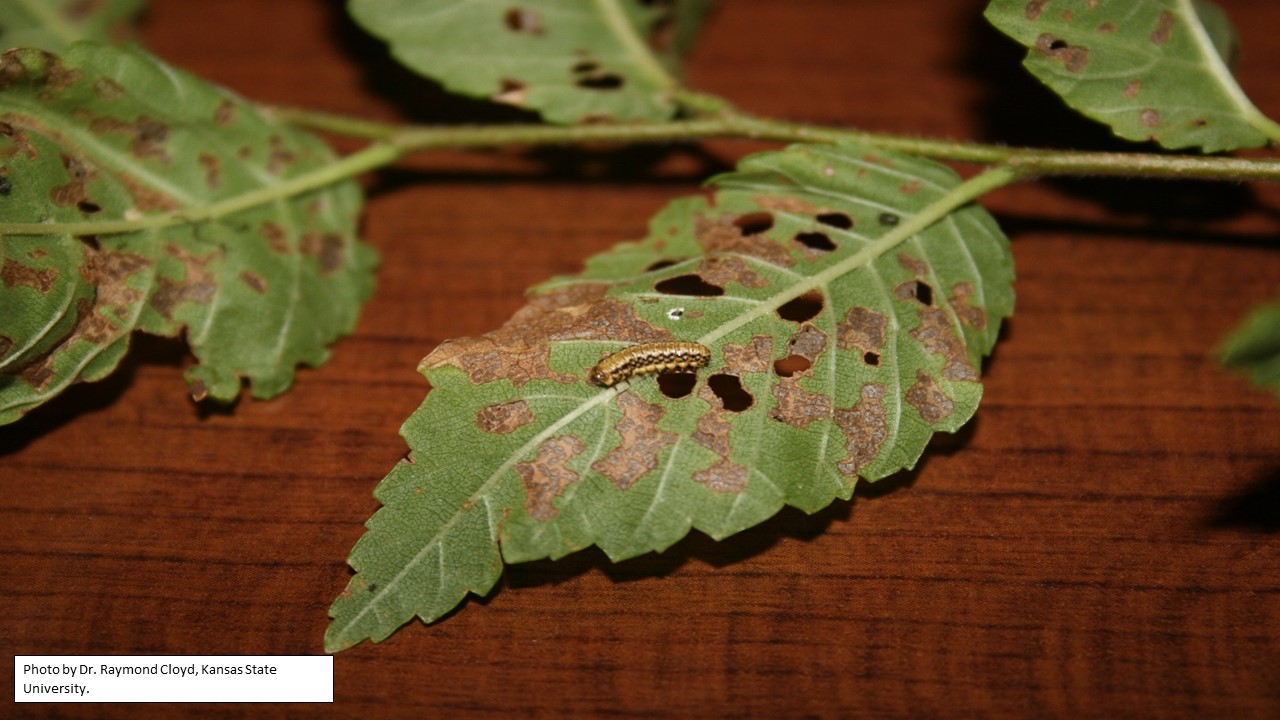–by Dr. Jeff Whitworth, Dr. Holly Schwarting and J.R. Ewing
Sorghum fields checked in north central Kansas this week indicated a variety of very active pests. Fields were anywhere from whorl-stage to flowering. Regardless of the stage of plant development, 100% of the plants sampled were infested with chinch bugs. Most are still small reddish to brown or black nymphs, but there are still mating adults as well. These bugs are feeding mainly around the base of the plants.
Some plants in the boot stage have populations of corn leaf aphids feeding right at the top of the about-to-emerge heads. Occasionally, these aphids are so numerous at the point of head extension that their honeydew interferes with the head’s emergence. Fortunately, aphid populations were not found frequently enough to potentially impact yield, just an occasional plant here and there.
Most of the whorl-stage sorghum (90%) is infested with a “ragworm”. These are a combination of corn earworms, armyworms, and fall armyworms, Mr. Tom Maxwell, Extension Agent in Saline County, even found a cattail caterpillar. They are in all larval stages, but mainly smaller, from 1st to 3rd instars. Thus, they will be feeding in the whorls for another 10-21 days, and then will pupate in the soil. In approximately 7-10 days, moths will emerge and start ovipositing in sorghum, which is vulnerable from flowering to soft dough, and/or soybeans. Some early flowering plants already had “headworms” feeding in the just emerging heads.
